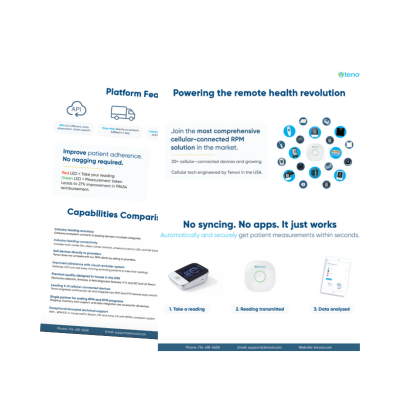Remote patient monitoring (RPM) has become a consistent part of chronic care management, with hypertension driving 57% of RPM episodes billed under traditional Medicare. Technology makes modern remote health monitoring possible. Connected blood pressure devices used in RPM programs give providers daily insights and help patients stay engaged in their own care. When structured well, these programs can lead to stronger remote patient monitoring outcomes from blood pressure control to better medication adherence.
As RPM grows, research shows its greatest impact comes when technology is paired with supportive care management. The 2025 Peterson Center on Healthcare report, Evolving Remote Monitoring: An Evidence-Based Approach to Coverage and Payment, found that Medicare spending on RPM nearly tripled in just a few years, reaching $195 million in 2023. More important, the report showed that the strongest remote patient monitoring outcomes occurred when technology was paired with timely support, interventions, coaching, and treatment. These adjustments augment monitoring data for improved care.
How can health teams pair technology and care support services to put this into practice? This article explores what supported RPM looks like in real-world settings, and how flexible technology paired with and supportive care work together to deliver stronger remote patient monitoring outcomes.
Supportive Care & Remote Patient Monitoring Outcomes
At Vivo Care, nearly 100 U.S.-based nurses engage with patients every day. Their encouragement and feedback help turn simple monitoring into meaningful outcomes. Patients who may begin drifting away from daily readings often stay engaged when they receive coaching and encouragement.
Providers can make medication adjustments without waiting for the next appointment when nurses flag issues between visits. For many patients, regular check-ins keep them committed to their care plan.
A North Carolina primary care clinic working with Vivo Care reported patients saw average blood pressure drop by 5.5 mmHg systolic and 8.7 mmHg diastolic within three months. These results match, and in diastolic control, surpass, those reported in a recent JAMA Network Open study.
The data underscore that when remote monitoring is embedded into everyday care with strong patient engagement, the benefits seen in controlled research settings can be equaled and even surpassed, in community practice.
The most compelling story lives in the voices of the care team. Behind every data point is a patient, and behind every patient is a nurse or provider helping turn numbers into action. Here’s what they see every day on the front lines of RPM care.
Voices from the Care Team
Clinicians see these results every day in their own patients. Tara Swachkammer, a Care Navigator for Vivo Care in Ohio, shared:
“It’s so exciting to see patients realize the beauty of RPM. I have a patient that had blood pressures as high as 199/121 when starting this program last September. His 30-day average is now 124/77! I couldn’t be more proud of him.”
Aamir Iqbal, MD, Medical Director at Vivo Care and a California-based provider, added:
“When the same nurse is consistently watching my patients’ blood pressure readings, it feels like I’ve gained a trusted teammate. They bring years of nursing experience to the table, catching small changes that could signal bigger problems. For my high-risk patients, that extra set of skilled eyes makes all the difference in keeping them safe.”
With the right support team and reliable technology, practices don’t just collect data, they deliver better outcomes and safer care for patients with hypertension and other chronic conditions.
Flexible Tech Supports Whole-Person Care
Many patients living with hypertension often also manage diabetes, heart disease, or respiratory conditions. This is where a flexible and diverse RPM device ecosystem becomes essential. With Tenovi’s more than 40 RTM and RPM devices health teams can match the right device to patient needs. And strong connectivity across both cellular and Bluetooth devices ensures reliability, even in rural or hard-to-connect areas.
Tenovi’s Cellular Gateway helps patients stay engaged with built-in visual reminders: a red light signals when a reading is due, and a green light confirms successful transmission. Multiple devices can connect through the Gateway, with data transmitted securely to the Tenovi Cloud and seamlessly shared with any clinical platform.
Because the platform is modular, organizations can expand programs without adding complexity. Easy-to-use devices further increase the potential for stronger remote patient monitoring outcomes, reducing patient drop-off and improving engagement.
Together, these features create a reliable infrastructure that strengthens collaboration between technology and care services, ensuring that monitoring data flows where it’s needed and supports timely clinical action.
How Tech and Support Together Drive Remote Patient Monitoring Outcomes
The Peterson Center’s research reinforces the pivotal message that remote patient monitoring outcomes are strongest when technology and supportive care operate hand in hand. Technology provides the reliable backbone for data capture and transmission; nurse support ensures that data leads to coaching, engagement, and care adjustments.
When these two elements operate together, health organizations can move beyond simply tracking numbers. They can deliver proactive, whole-person care that helps control chronic conditions such as hypertension, improves medication adherence, and supports patients managing multiple chronic conditions.


